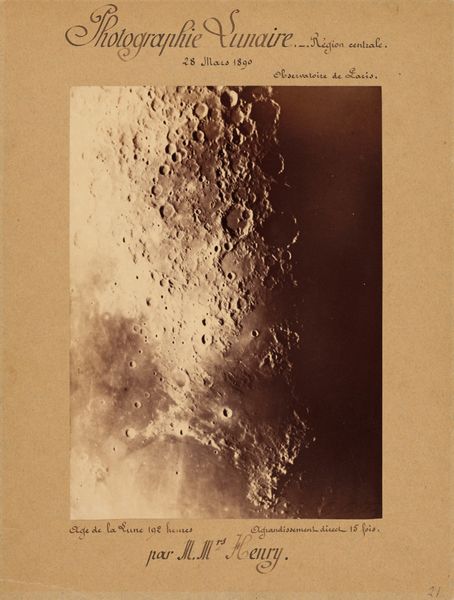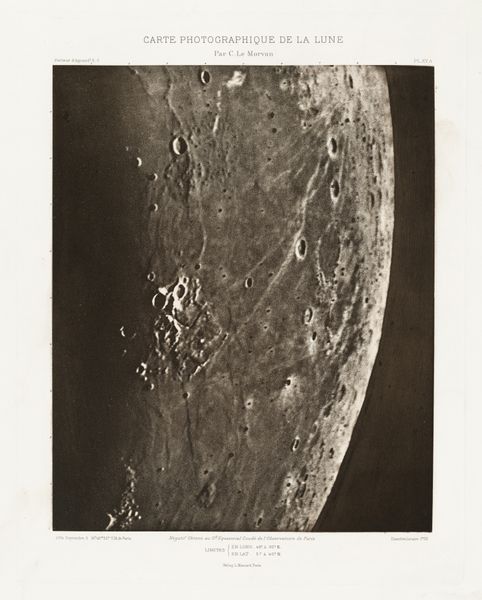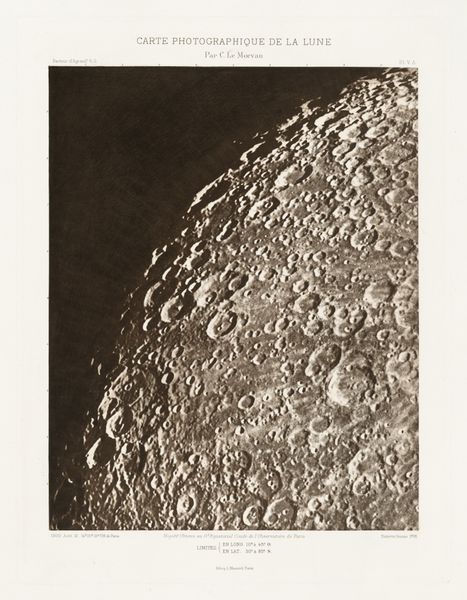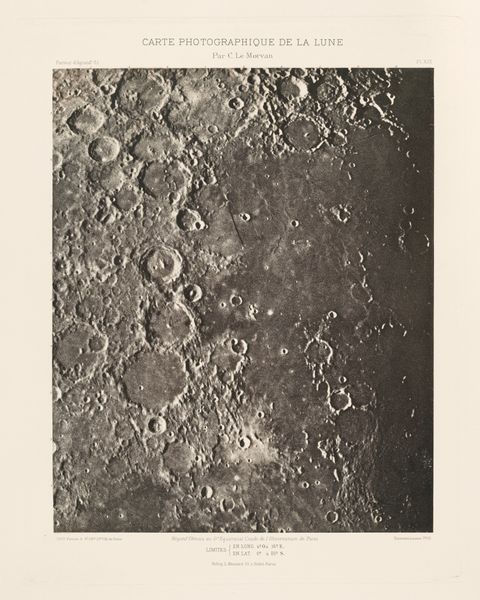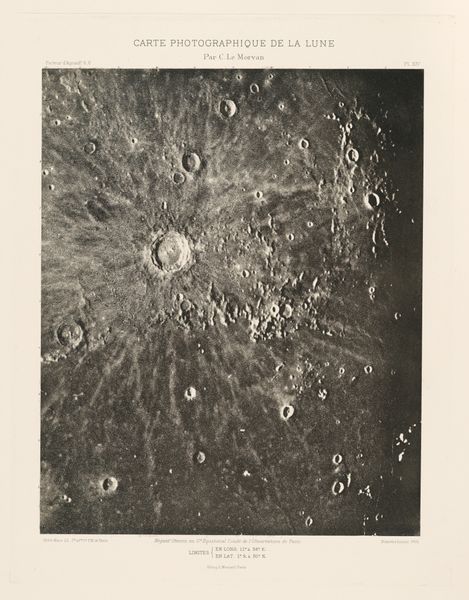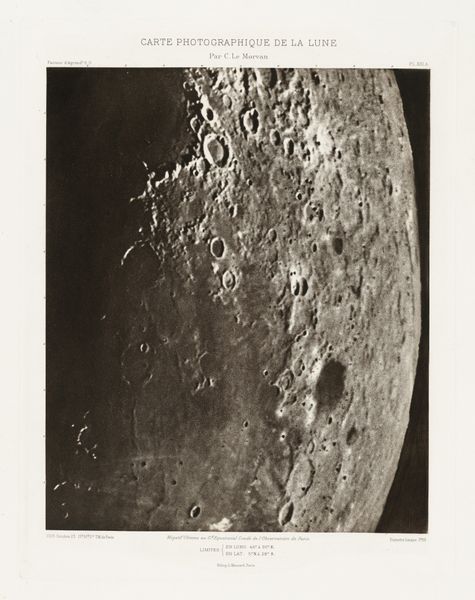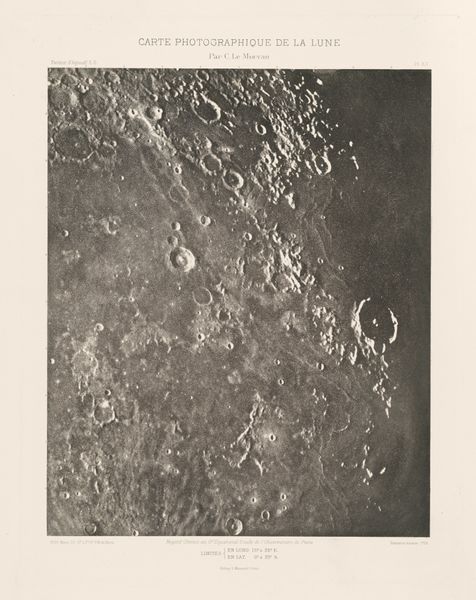
Carte photographique de la lune, planche XI (Photographic Chart of the Moon, plate XI) Possibly 1907 - 1914
0:00
0:00
print, photography
# print
#
landscape
#
photography
#
geometric
Dimensions: image: 31.1 × 25.5 cm (12 1/4 × 10 1/16 in.) plate: 38.9 × 29.5 cm (15 5/16 × 11 5/8 in.) sheet: 49 × 37.9 cm (19 5/16 × 14 15/16 in.) tissue: 42.55 × 37.47 cm (16 3/4 × 14 3/4 in.)
Copyright: National Gallery of Art: CC0 1.0
Charles Le Morvan made this photographic chart of the moon sometime between 1865 and 1933, though I don't know exactly when. It's an image made with light, with the moon and camera doing a kind of dance together. What strikes me most is the texture. It's not just a smooth, celestial sphere, but a surface riddled with craters, each one a tiny performance of light and shadow. Looking closely, you can almost feel the gritty, uneven terrain. There’s this one crater, near the top, that looks like an eye staring back at us, full of cosmic curiosity. It reminds me that art, like the moon, is often about revealing the unseen. I guess Le Morvan must have been looking at some astronomical photography. It all feels like a conversation between science, art, and our own human desire to map the unknown. It’s a reminder that even the most scientific endeavors are still a form of looking, of seeing, and ultimately, of interpreting.
Comments
No comments
Be the first to comment and join the conversation on the ultimate creative platform.
